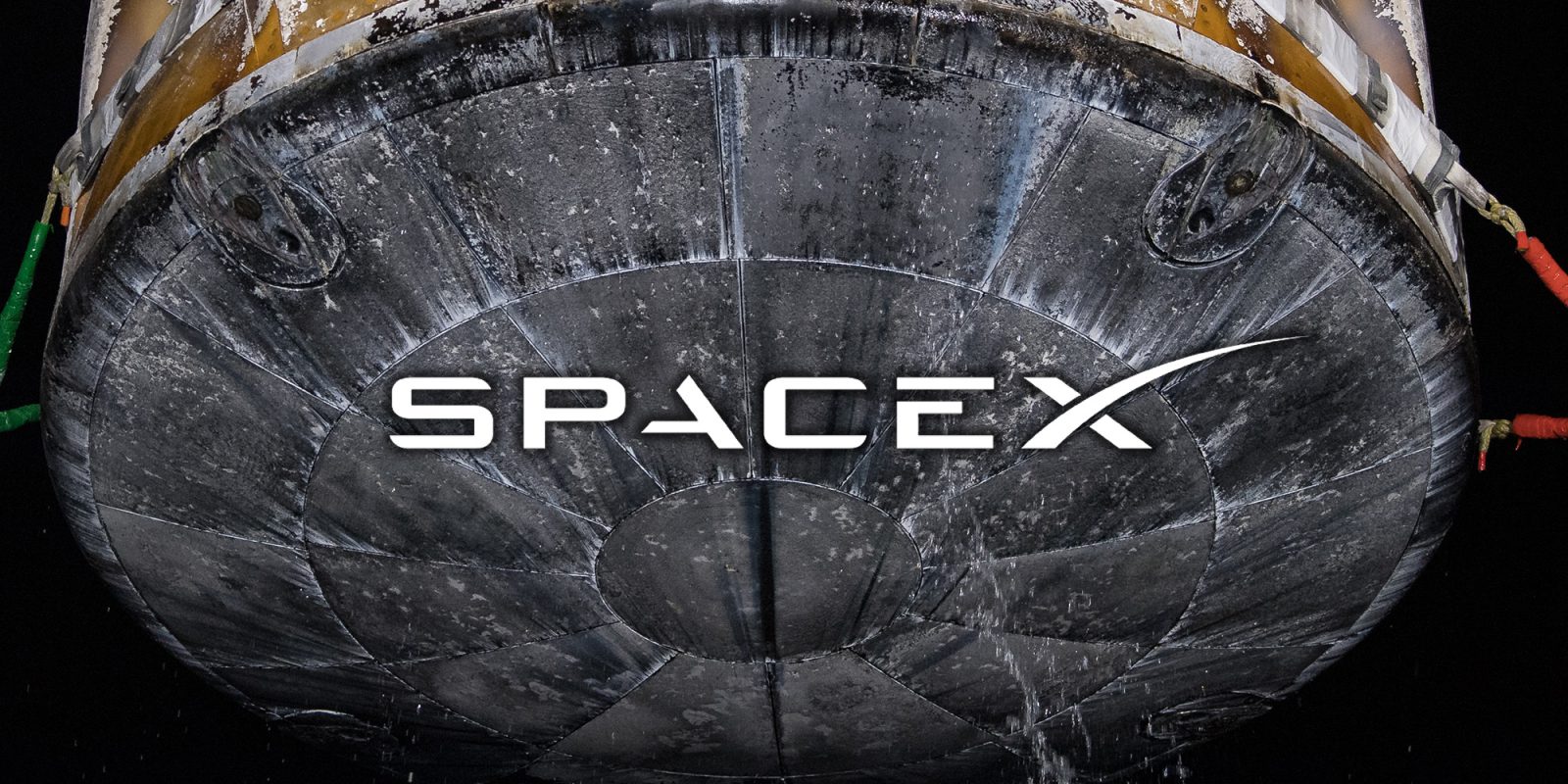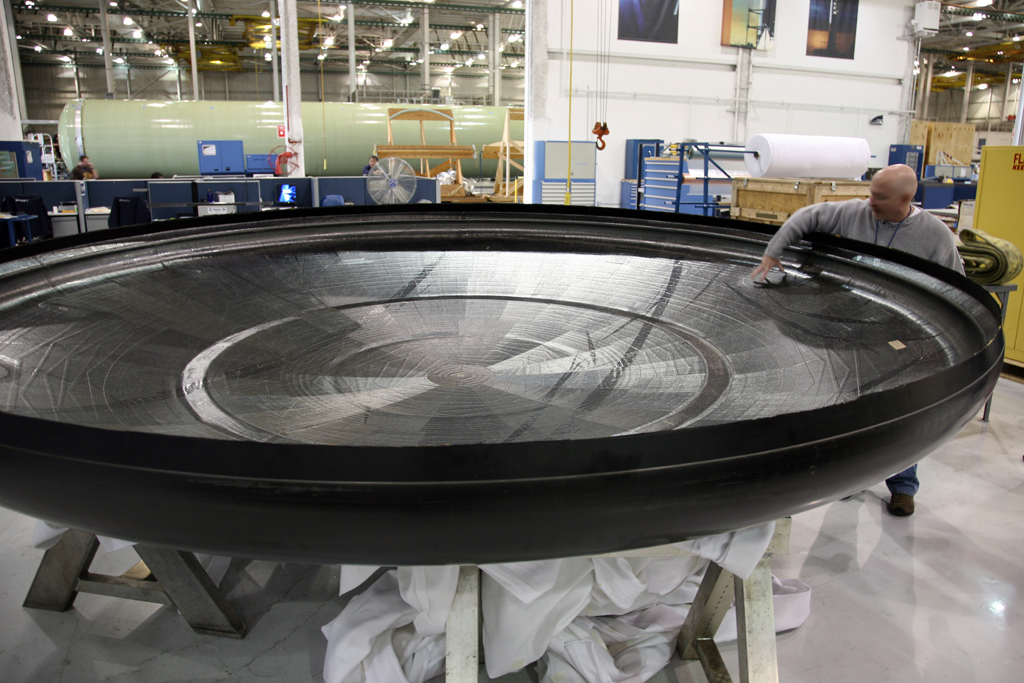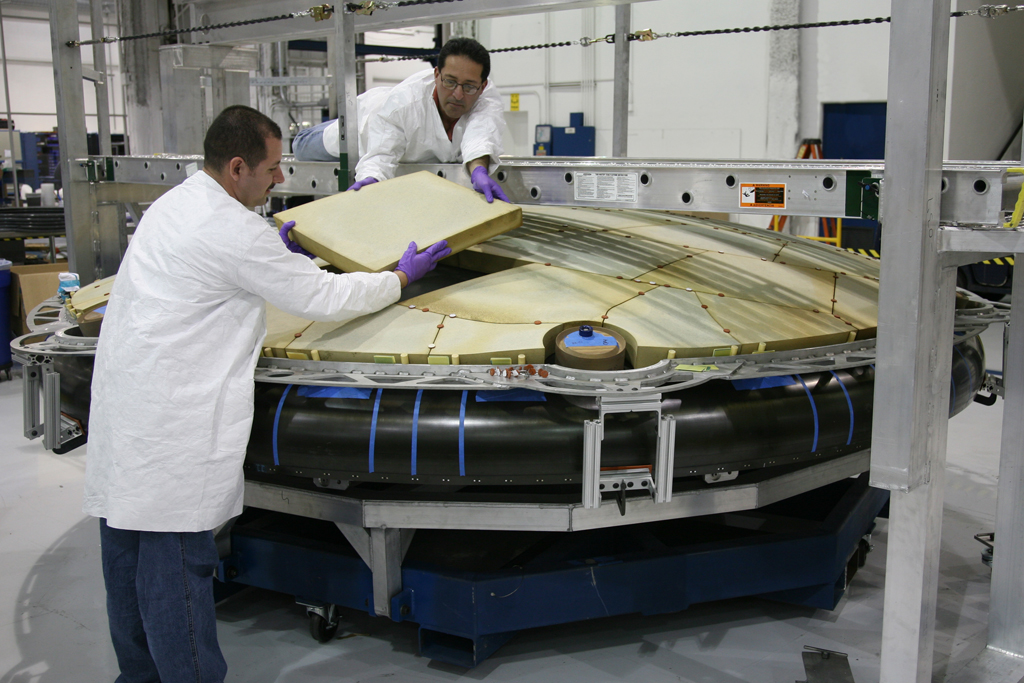
Towards the start of this year, NASA’s Engineering and Safety Center assessed the previously flown Dragon Capsule heat shield structure for potential corrosion damage ahead of its flight on Crew-4. They found that corrosion degradation would occur up until launch, but signed off on the reuse of the structure.
Two documents obtained by Space Explored via a Freedom of Information Act request show the start and conclusion of support the NASA Engineering and Safety Center provided to the Commercial Crew Program. The first document is simply an overview of the request, while the second, which was partially redacted, reveals the NESC’s findings.
Crew-4 heat shield
Crew-4, unlike SpaceX’s other crewed launches for NASA, used a composite structure that had already been flown underneath the primary thermal protection system. This means the structure underwent the stress of launch and reentry and that it was potentially exposed to water following its previous splashdown. While this structure was reused, Crew-4 was the first launch of their capsule, Crew Dragon Freedom.

The Commercial Crew Program Material and Processes engineering reached out to the NESC for assistance in evaluating the damage on the heat shield as a result of corrosion.
The second document, the closeout summary, provides a bit more information into the exact concerns the engineering team had. The primary concern being investigated was potential degradation and corrosion to the structure as a result of water intrusion.
Some sections of the document were blacked out by NASA, citing a provision which allows information to be withheld from Freedom of Information Act requests if the information contains “trade secrets and commercial or financial information obtained from a person that is privileged or confidential.” The Commercial Crew contract SpaceX has with NASA protects the company’s rights to its trade secrets.
In the document, NESC teams agreed with the commercial crew program and allowed the heat shield structure to be reflown once for the Crew-4 mission, but also included additional statements. The NESC lead of the review, Richard Russell, stated that “Because of the increased risk associated with corrosion-related damage, the design and use of [REDACTED] structures exposed to water immersion should be discouraged.” He added, “The X-ray techniques are not qualified to assure that all the water has been removed during the drying operations; therefore, corrosion degradation will continue until launch.” Still, based on all the data, such as stress and load analysis, he said, “I am comfortable with a single flight of this heat shield [REDACTED].”
This approval was contingent on verification of water removal from the heat shield via X-ray. He also seemingly didn’t want this statement of approval to be viewed as a more widespread approval of heat shield reuse, concluding, “any reuses of this or any other heat shield should not happen without a more comprehensive testing and inspection program.”
While these two documents share a bit of insight into NASA’s understanding of heat shield reuse on these capsules, there are 11 more pages of documents, likely at least in part the full decisionals referenced at the end of the second document, that were responsive to my request which NASA withheld. NASA cited Exemption 3, 5 U.S.C. § 552(b)(3) and Exemption 4, 5 U.S.C. § 552(b)(4); these being the export-control reasons and corporate / trade secrets respectively.

Space Explored reached out to NASA in order to get a bit more insight into the documents and clarify the state of the corrosion. The agency did not answer any of my specific questions, but provided a statement saying that SpaceX’s testing techniques are proprietary, so I would have to reach out to them. SpaceX did not reply to our request for comment. NASA also included a portion of a statement they shared back in May.
SpaceX and NASA perform a full engineering review of the heat shield’s thermal protection system following each return, including prior to the launch of the Crew-4 mission currently at the International Space Station. The heat shield composite structure (structure below the tile) was re-flown per normal planning and refurbishment processes. The thermal protection system on the primary heat shield for Crew-4 was new, as it has been for all Commercial Crew Program missions. SpaceX has only demonstrated reuse of selected PICA (Phenolic-Impregnated Carbon Ablator) tiles, which is a lightweight material designed to withstand high temperatures, as part of the heat shield on cargo flights.
Portion of NASA’s statement from May. NASA’s full response to me is embedded at the bottom of the story.
Space Explored’s take
While the information these documents revealed is quite limited, the concurrence of the Commercial Crew Program’s decision and that of the NASA Engineering and Safety Center is good to see. The NESC was created out of the recommendations of the Columbia Accident Investigation Board in order to be able to independently verify safety standards, so the center’s response supporting the crew program’s decision is a positive sign they made the right decision.
Of course, it’s also hard to have a full opinion on this with the tests and risk postures being blacked out. I do, however, feel somewhat mixed, as if a “more comprehensive testing and inspection program” should be in place for future reuses of heat shield components, why would it seemingly not be in place for this single reuse? This is one of the questions I posed to both NASA and SpaceX.
I also find the fact they referred to the reuse of the composite structure as “re-flown per normal planning and refurbishment processes” interesting. As Crew-4 was the first re-flight of the composite structure on a crewed mission and the NESC said more comprehensive testing and inspection should be in place, it feels odd to refer to the reuse as per “normal planning and refurbishment processes.”
NESC documents
NESC Initial Out of Board Summary of Crew Dragon Heat Shield Corrosion Evaluation
NESC Request Closeout Summary
NASA’s full statement
For information on SpaceX testing, please reach out to media@spacex.com for more information as it’s considered proprietary.
For NASA’s assessment, please see the portion of our response below from May on Crew Dragon’s heat shield for reference.
SpaceX and NASA perform a full engineering review of the heat shield’s thermal protection system following each return, including prior to the launch of the Crew-4 mission currently at the International Space Station. The heat shield composite structure (structure below the tile) was re-flown per normal planning and refurbishment processes. The thermal protection system on the primary heat shield for Crew-4 was new, as it has been for all Commercial Crew Program missions. SpaceX has only demonstrated reuse of selected PICA (Phenolic-Impregnated Carbon Ablator) tiles, which is a lightweight material designed to withstand high temperatures, as part of the heat shield on cargo flights.
For additional background, here’s more information on the NASA Engineering & Safety Center’s (NESC) work with commercial crew:
As a program-independent organization, the NASA Engineering & Safety Center (NESC) is routinely called on by the Commercial Crew Program and others across the agency to assist with engineering topics on which the NESC might provide valuable insight. For example, the NESC supported commercial crew in the evaluation of Dragon’s heat shield prior to its reuse on the Crew-4 mission. The NESC also worked with commercial crew on the evaluation of the heat shield acceptance test issue. These are not classified as independent investigations, but rather the NESC supporting the program by offering its unique and deep expertise in the form of technical assessments. The NESC has partnered with commercial crew on a variety of engineering and safety assessments throughout the development of both provider’s crew transportation systems, and will continue to do so as those systems operate post-certification missions for the agency.
FTC: We use income earning auto affiliate links. More.



Comments